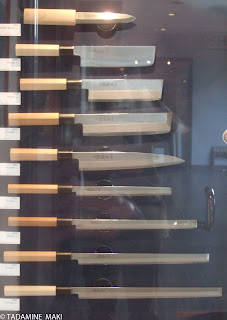
Steel nails produced by Japanese traditional way don't tend to rust, unlike the ones today. For example, the nails driven into 1,400 years old structures in Horyuji Temple, one of the oldest temples in Japan, are covered with the layer of black rust and still in use. Today's steel nails of mass production, on the other hand, will rust out only within some decades years.
There are main three reasons why the traditional nails don't rust completely.
1. The old nails contain less sulfur(S), manganese(Mn), silicon(Si) and more titanium(Ti) than today's nails. S, Mn, Si and some Oxygen make steel rust out easily and titanium keep it from rusting.
2. The old contains many layers that can produce the black rust and the rust keep it away from rusting inside the nails.
3. The old nails are used at structure made of cypress with better quality and the material tend to keep water away from going into inside the wood.
The first is that today's nails are added to Mn to improve the workability and Si to get rid of Oxygen in the steel. And coke is used as fuels to get steel out of iron stones in melting furnaces. Coke contains much sulfur. Meantime, raw material, sand iron, of the old steel contained much Mn and Si but the old way of making steel changed into it with less Mn and Si. Wood charcoal, less sulfur than coke, are used to as fuels to make the old steel.
By the way, fired charcoal makes things lower temperature than the fired coke. Fired charcoal make them about 1,200 to 1,300 degrees C and the coke about 1,400 to 1,500 degrees C. The new way of making steel with high temperature of fired coke is more effective than the old way but easy to allow the steel contain much more impurities because of the high temperature.
Plus, the old steel were made of iron sand with richer titanium than iron stone today.
So, the old steel used to be made in less effective way than the new but has better quality.
The second is that many hits are needed to make steel in old way to emit slag from the steel. Many hits make many layers inside the steel that will produce the coat to keep it from rusting.
The third is that quality cypress wood was used in the structure in the major temples. Cypress will not be weakened in a thousand years because the numbers of cellulose, composed of cypress, is almost the same as the thousand years old wood. An old device, called Yari-ganna, would use to give the finishing touches of wooden pillars or beams. The old device is by far more ineffective than the new devices but this never hurt cells on the surface of wood, unlike the new. So the wood finished by the old tool don't tend to take water or oxygen inside the wood, and don't tend to be hurt, protecting the driven nails.
The above three reasons make the old nails last long. But no nails made in the classic way are used in the wooden buildings except the high-ranking temples. This kinds of nails are not needed any more now. Because many buildings last too much shorter than the old nails. Many factors in Japanese society don't need long-life buildings.
Labels: Nara, temple































